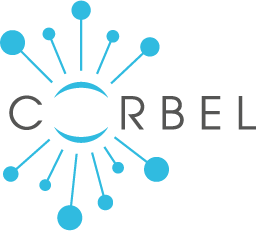Nuclear Magnetic Resonance (NMR)
In-cell NMR
Description
In-cell NMR spectroscopy allows obtaining atomic-level structural and functional information on biological macromolecules directly in living cells. It can be applied to study proteins in both bacteria (E. coli) and human (HEK293T) cells. The protein of interest is directly overexpressed in the cells. The culture media are replaced to achieve either uniform (15N / 13C-15N) or amino acid-selective labelling.
Service provider
Consorzio Interuniversitario Risonanze Magnetiche di Metallo Proteine (CIRMMP),
Centro di Risonanze Magnetiche
Location
Sesto Fiorentino, Italy
Contacts
Scientific contact: Lucia Banci
Technical contact: Rebecca Del Conte
Relaxometry
Description
The relaxometer provides a list of the relaxation times/rates measured at the different proton Larmor frequencies (from 0.01 to 45 MHz), called a relaxation dispersion profile. The relaxation dispersion profiles can then be fitted to obtain the reorientation time of the system and other parameters providing information on its structure and dynamics. Relaxometry measurements can be performed in water solutions of diamagnetic or paramagnetic unlabeled molecules or on unlabeled macromolecules dissolved in D2O.
Service provider
Consorzio Interuniversitario Risonanze Magnetiche di Metallo Proteine (CIRMMP),
Centro di Risonanze Magnetiche
Location
Sesto Fiorentino, Italy
Contacts
Scientific contact: Lucia Banci
Technical contact: Rebecca Del Conte
Solid State NMR
Description
Solid State NMR spectroscopy measurements can be performed in virtually any kind of biological solid. 13C-15N labelled samples are required, since the vast majority of the experiments are based on direct heteronuclear detection. The local order in the solid as well as its hydration state are known to dramatically affect spectral quality; micro- to nanocrystalline proteins are therefore the target of these studies.
Service provider
Consorzio Interuniversitario Risonanze Magnetiche di Metallo Proteine (CIRMMP),
Centro di Risonanze Magnetiche
Location
Sesto Fiorentino, Italy
Contacts
Scientific contact: Lucia Banci
Technical contact: Rebecca Del Conte
Solution NMR
Description
Structural information on proteins can be obtained by solution NMR, for which isotopically labelled samples (usually 15N and/or 15N/13C) are required. Structure determination by NMR typically requires a protein concentration of 0.5 mM or greater that needs to be stable for several days at the desired temperature. NMR studies for ligand binding or protein-protein interaction require concentrations of at least 0.05 mM. The investigation of the protein folding state of a sample as well as its aggregation state at the selected NMR protein concentration are also possible.
Service provider
Consorzio Interuniversitario Risonanze Magnetiche di Metallo Proteine (CIRMMP),
Centro di Risonanze Magnetiche
Location
Sesto Fiorentino, Italy
Contacts
Scientific contact: Lucia Banci
Technical contact: Rebecca Del Conte
 shared services for life-science
shared services for life-science